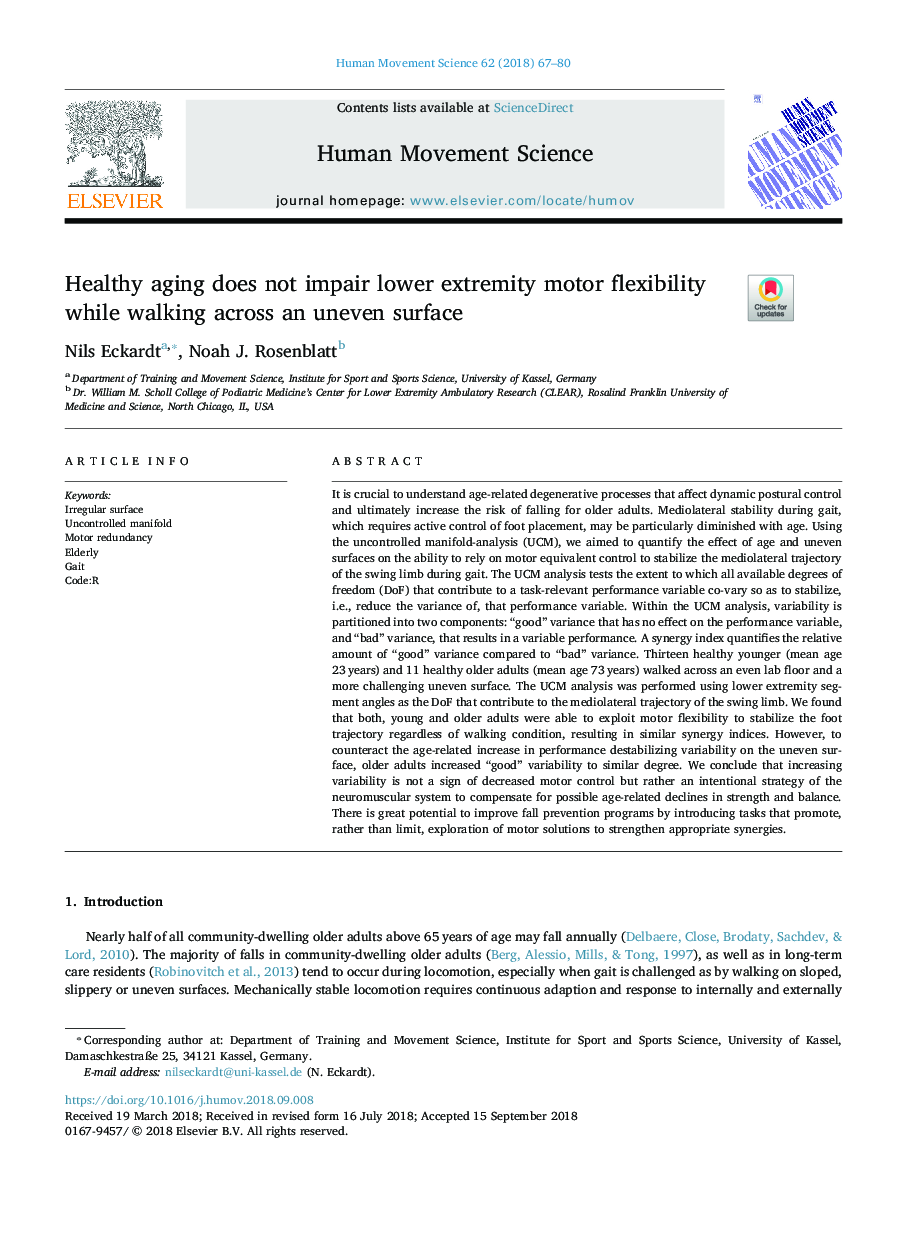| کد مقاله | کد نشریه | سال انتشار | مقاله انگلیسی | نسخه تمام متن |
|---|---|---|---|---|
| 11031371 | 1646013 | 2018 | 14 صفحه PDF | دانلود رایگان |
عنوان انگلیسی مقاله ISI
Healthy aging does not impair lower extremity motor flexibility while walking across an uneven surface
ترجمه فارسی عنوان
پیری سالم باعث انعطاف پذیری حرکتی اندام تحتانی نمی شود در حالی که در یک سطح ناهموار حرکت می کند
دانلود مقاله + سفارش ترجمه
دانلود مقاله ISI انگلیسی
رایگان برای ایرانیان
کلمات کلیدی
موضوعات مرتبط
علوم زیستی و بیوفناوری
علم عصب شناسی
علوم اعصاب شناختی
چکیده انگلیسی
It is crucial to understand age-related degenerative processes that affect dynamic postural control and ultimately increase the risk of falling for older adults. Mediolateral stability during gait, which requires active control of foot placement, may be particularly diminished with age. Using the uncontrolled manifold-analysis (UCM), we aimed to quantify the effect of age and uneven surfaces on the ability to rely on motor equivalent control to stabilize the mediolateral trajectory of the swing limb during gait. The UCM analysis tests the extent to which all available degrees of freedom (DoF) that contribute to a task-relevant performance variable co-vary so as to stabilize, i.e., reduce the variance of, that performance variable. Within the UCM analysis, variability is partitioned into two components: “good” variance that has no effect on the performance variable, and “bad” variance, that results in a variable performance. A synergy index quantifies the relative amount of “good” variance compared to “bad” variance. Thirteen healthy younger (mean age 23â¯years) and 11 healthy older adults (mean age 73â¯years) walked across an even lab floor and a more challenging uneven surface. The UCM analysis was performed using lower extremity segment angles as the DoF that contribute to the mediolateral trajectory of the swing limb. We found that both, young and older adults were able to exploit motor flexibility to stabilize the foot trajectory regardless of walking condition, resulting in similar synergy indices. However, to counteract the age-related increase in performance destabilizing variability on the uneven surface, older adults increased “good” variability to similar degree. We conclude that increasing variability is not a sign of decreased motor control but rather an intentional strategy of the neuromuscular system to compensate for possible age-related declines in strength and balance. There is great potential to improve fall prevention programs by introducing tasks that promote, rather than limit, exploration of motor solutions to strengthen appropriate synergies.
ناشر
Database: Elsevier - ScienceDirect (ساینس دایرکت)
Journal: Human Movement Science - Volume 62, December 2018, Pages 67-80
Journal: Human Movement Science - Volume 62, December 2018, Pages 67-80
نویسندگان
Nils Eckardt, Noah J. Rosenblatt,
